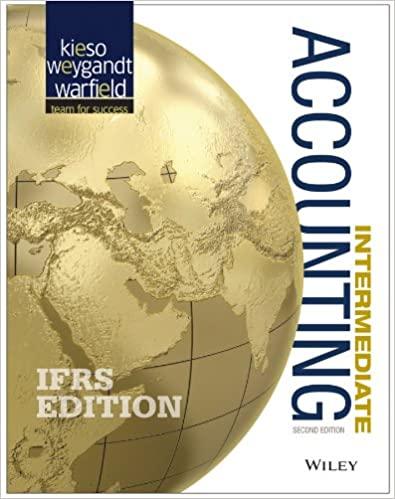Kang Company, a manufacturer of ballet shoes, is experiencing a period of sustained growth. In an effort
Question:
Kang Company, a manufacturer of ballet shoes, is experiencing a period of sustained growth. In an effort to expand its production capacity to meet the increased demand for its product, the company recently made several acquisitions of plant and equipment. Rob Joffrey, newly hired in the position of fixed-asset accountant, requested that Danny Nolte, Kang’s controller, review the following transactions.
Transaction 1: On June 1, 2015, Kang Company purchased equipment from Wyandot Corporation. Kang issued a HK\($28\),000, 4-year, zero-interest-bearing note to Wyandot for the new equipment. Kang will pay off the note in four equal installments due at the end of each of the next 4 years. At the date of the transaction, the prevailing market rate of interest for obligations of this nature was 10%. Freight costs of HK\($425\) and installation costs of HK\($500\) were incurred in completing this transaction. The appropriate factors for the time value of money at a 10% rate of interest are given below.

Transaction 2: On December 1, 2015, Kang Company purchased several assets of Yakima Shoes Inc., a small shoe manufacturer whose owner was retiring. The purchase amounted to HK\($220\),000 and included the assets listed below. Kang engaged the services of Tennyson Appraisal Inc., an independent appraiser, to determine the fair values of the assets which are also presented below.

During its fiscal year ended May 31, 2016, Kang incurred HK\($8\),000 for interest expense in connection with the financing of these assets.
Transaction 3: On March 1, 2016, Kang Company exchanged a number of used trucks plus cash for vacant land adjacent to its plant site. (The exchange has commercial substance.) Kang intends to use the land for a parking lot. The trucks had a combined book value of HK\($35\),000, as Kang had recorded HK\($20\),000 of accumulated depreciation against these assets. Kang’s purchasing agent, who has had previous dealings in the secondhand market, indicated that the trucks had a fair value of HK\($46\),000 at the time of the transaction.
In addition to the trucks, Kang paid HK\($19\),000 cash for the land.
Instructions
(a) Plant assets such as land, buildings, and equipment receive special accounting treatment. Describe the major characteristics of these assets that differentiate them from other types of assets.
(b) For each of the three transactions described above, determine the value at which Kang Company should record the acquired assets. Support your calculations with an explanation of the underlying rationale.
(c) The books of Kang Company show the following additional transactions for the fiscal year ended May 31, 2016.
(1) Acquisition of a building for speculative purposes.
(2) Purchase of a 2-year insurance policy covering plant equipment.
(3) Purchase of the rights for the exclusive use of a process used in the manufacture of ballet shoes.
For each of these transactions, indicate whether the asset should be classified as a plant asset. If it is a plant asset, explain why it is. If it is not a plant asset, explain why not, and identify the proper classification.
Step by Step Answer:

Intermediate Accounting IFRS Edition
ISBN: 9781118443965
2nd Edition
Authors: Donald E. Kieso, Jerry J. Weygandt, Terry D. Warfield





